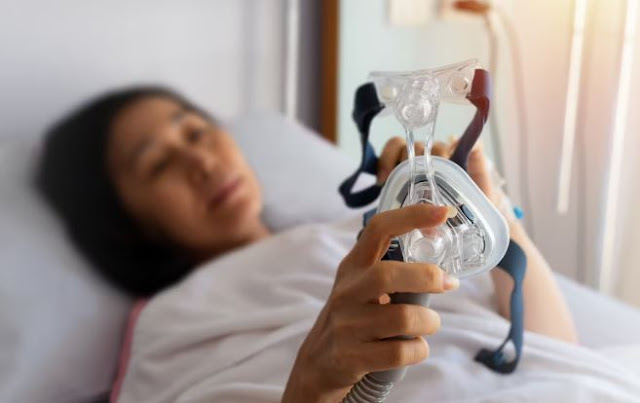
This article delves into the intricate issue of foam in CPAP and BiPAP machines, unveiling potential risks hidden beneath the surface. The medical device realm, built on trust, can sometimes harbor hidden dangers. This exploration illuminates the perils linked to foam components within CPAP and BiPAP machines, exposing how seemingly innocuous elements can conceal unforeseen health risks. Amidst the pursuit of improved health, it is imperative to understand the nuanced details of medical devices. This silent threat posed by foam in CPAP and BiPAP machines emphasizes the significance of meticulous examination. Staying updated with the latest CPAP lawsuit news adds a layer of awareness, ensuring personal safety and contributing to a safer healthcare environment for all.
Vigilance, informed decisions, and collaboration with healthcare professionals are pivotal measures in mitigating potential dangers and ensuring the safety and efficacy of medical devices. Every effort toward reliable and secure medical devices holds significance in a landscape where well-being is paramount.
Introduction To Foam In CPAP And BiPAP Machines
Imagine entrusting a device to enhance your breathing, only to discover an unforeseen threat lurking beneath its seemingly benign exterior. This exposé will shed light on foam within CPAP and BiPAP machines—devices designed to offer respite to individuals grappling with breathing difficulties, such as sleep apnea. Although intended to improve lives, these machines might house foam components that harbor hidden dangers.
What Does Foam Do In These Machines?
To fathom the potential perils, it is vital to grasp foam's multifaceted role within CPAP and BiPAP machines. Foam components are frequently integrated into these devices to mitigate sound and vibration, creating a quieter and ostensibly more comfortable user experience. However, it is crucial to note that not all foams are created equal. Certain foams, especially those utilized in older machine models, might succumb to degradation over time. The degradation process can result in the emission of volatile organic compounds (VOCs), which can penetrate the respiratory system when inhaled.
Potential Risks Of Foam Degradation
As foam components age and degrade, they undergo a transformative process that can have dire health implications. This degradation can result in the liberation of volatile organic compounds (VOCs) into the surrounding environment. These compounds, when inhaled, may induce a range of health issues. Short-term consequences might manifest as throat, eye, and skin irritation, while prolonged exposure could culminate in more severe respiratory afflictions.
CPAP And BiPAP Machine Recalls
Regulatory bodies are heeding the call for action in response to escalating apprehensions concerning foam degradation. Several recalls have been instigated for specific models of CPAP and BiPAP machines equipped with foam components. These recalls underscore the urgency of meticulous monitoring regarding the safety and efficacy of medical devices, even those that have become intrinsic to our daily lives.
Navigating The Replacement Process
For individuals reliant on CPAP or BiPAP machines, the news of recalls might incite feelings of trepidation and uncertainty. Navigating the replacement process necessitates familiarization with the affected machine models and unwavering adherence to the guidelines dispensed by manufacturers and regulatory entities. This might entail procuring replacement machines or transitioning to foam-free components. While this endeavor might appear daunting, the paramount concern is your safety and well-being unequivocally.
Advances In Foam-Free Technology
Amidst the shadows cast by apprehensions surrounding foam in CPAP and BiPAP machines, a glimmer of optimism emerges in foam-free technology. Manufacturers are diligently pioneering machines that eschew foam components in favor of alternative materials. These innovations mark a commendable stride toward guaranteeing the reliability and safety of medical devices that countless individuals depend upon to uphold their well-being.
Ensuring Safety And Advocacy
In the face of burgeoning health concerns, knowledge is a potent tool. For individuals reliant on CPAP or BiPAP machines, consider the following steps to safeguard your well-being:
1. Stay Informed: Remain attuned to recalls and safety advisories about your machine model.
2. Adhere To Guidelines: Wholeheartedly embrace manufacturers' maintenance, cleaning, and replacement instructions.
3. Consult Professionals: Seek guidance from your healthcare provider or equipment supplier to navigate replacement alternatives.
4. Champion Change: Your voice bears significance. As a user, harness your influence to advocate for safer materials and heightened regulation in medical device fabrication.
CPAP Conclusion
Navigating the intricacies of medical devices demands understanding. The silent threat foam poses in CPAP and BiPAP machines underscores the importance of diligent scrutiny. Staying informed, advocating for change, and collaborating with healthcare professionals are steps toward mitigating potential hazards and ensuring the safety and effectiveness of medical devices. Amidst this landscape, vigilance matters. Keeping abreast of the latest CPAP lawsuit news adds an extra layer of awareness to safeguard oneself and contribute to a safer healthcare landscape for all.
In a world where our health is paramount, every measure taken to ensure the reliability and safety of medical devices matters. Through a collective commitment to vigilance and informed decision-making, we can foster a healthcare environment that prioritizes well-being and mitigates risks.
